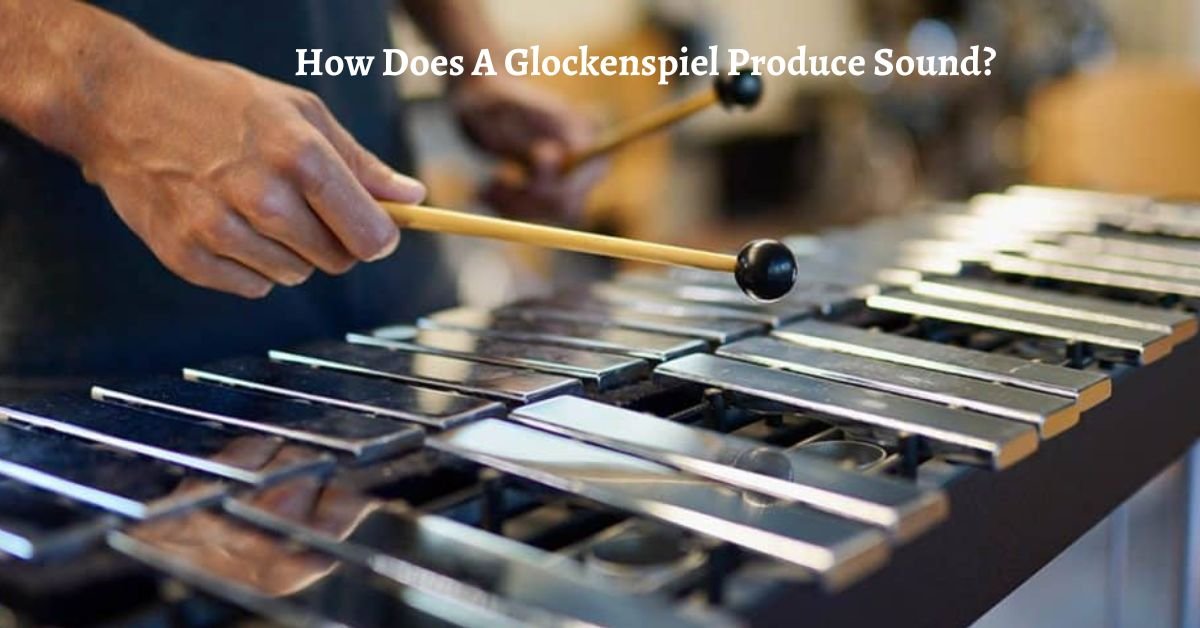Physical Address
304 North Cardinal St.
Dorchester Center, MA 02124
Physical Address
304 North Cardinal St.
Dorchester Center, MA 02124


A glockenspiel produces sound by the vibration of its metal bars when struck with a mallet. The sound is amplified by resonator tubes underneath the bars and influenced by the material used for the bars and tubes. The resulting bright, ringing sound is distinctive and recognizable.
The glockenspiel is a percussion instrument that creates beautiful, high-pitched tones. It’s very similar to a xylophone, but instead of wooden bars, it has metal bars arranged like a keyboard. These bars are struck with mallets to produce a bright, clear sound.
Glockenspiels typically have a range of 2 ½ to 3 octaves, although some professional models can go even higher. That means they have a lot of notes they can play! They are used in all sorts of musical settings, including orchestras, marching bands, and even solo performances.
The word “glockenspiel” is actually German for “bells,” which makes sense because way back when, glockenspiels were actually made of small bells! Over time, those bells were replaced with metal bars, but the name stuck around.
The sound produced by a glockenspiel is the result of the vibration of the metal bars when they are struck with a mallet. When the mallet strikes the bar, it causes the bar to vibrate, which produces sound waves. These sound waves then travel through the air and into our ears, where they are interpreted as sound.
The resonator tubes of a glockenspiel play a crucial role in amplifying the sound produced by the metal bars. The tubes are tuned to specific frequencies, so when the bar vibrates, the tubes amplify the specific frequency of the note being played. This gives the glockenspiel its bright, distinctive sound.

The quality of sound produced by a glockenspiel is also influenced by the material used for the metal bars and resonator tubes. For example, steel bars produce a brighter, more ringing sound compared to aluminum bars, which produce a softer, warmer sound. Similarly, metal resonator tubes produce a brighter sound compared to plastic tubes, which produce a warmer sound.
A glockenspiel is made up of several key components that work together to produce sound. These components include:
A glockenspiel is a percussion instrument that consists of metal bars arranged on a frame. When a bar is struck with a mallet, it vibrates and produces sound waves. The sound is amplified by resonator tubes beneath the bars, which are tuned to specific frequencies that match the notes of the metal bars. The tubes amplify the frequency of the note being played, making the sound louder and clearer.

Music is made on a glockenspiel by striking the metal bars with a mallet, producing a bright, ringing tone. The player uses different mallets to produce different dynamics and timbres. The bars are arranged in a specific pattern to produce a musical scale, allowing the player to create melodies and chords.
The metal bars in a glockenspiel vibrate when struck with a mallet, producing sound waves that travel through the air and into our ears, creating the musical note we hear. The vibration of the bar creates pressure waves that travel through the resonator tubes beneath the bar, amplifying the frequency of the note being played.
How many notes can a glockenspiel play?
A glockenspiel can play as many notes as it has metal bars. Most glockenspiels have between 25 and 37 metal bars, but some larger instruments can have up to 50 bars.
Can a glockenspiel be played by anyone?
Yes, a glockenspiel is a relatively simple instrument to play, making it a popular choice for beginners. It is easy to learn the basics of playing a glockenspiel, but it takes time and practice to develop mastery.
Is a glockenspiel suitable for all types of music?
A glockenspiel is commonly used in orchestral, marching band, and percussion ensemble music, but it can be used in other types of music as well. Its bright, ringing tone makes it a popular choice for adding a unique sound to a variety of musical styles
A glockenspiel is a unique and versatile musical instrument that produces a bright, ringing sound. The sound is produced by the vibration of metal bars when they are struck with a mallet, and is amplified by the resonator tubes underneath the bars.
The quality of sound produced by a glockenspiel is also influenced by the material used for the metal bars and resonator tubes. Whether you are a beginner or an experienced musician, a glockenspiel is a great choice for adding a unique and recognizable sound to your music.
[…] glockenspiel is a musical instrument that originated in Germany and is commonly used in orchestras, marching […]
[…] in a chromatic scale. The bars are struck with mallets to produce a clear and bright sound. Glockenspiels are typically played in orchestras and marching bands, and they are also used in popular […]
[…] a chromatic scale. The bars are mounted on a frame and are struck with mallets to produce a sound. Glockenspiels are often used in orchestras and marching bands, and they produce a bright, bell-like sound. They […]
[…] the celesta and the keyboard glockenspiel may look and sound similar, But Glockenspiel aren’t. They are two distinct instruments with their own unique qualities. The celesta is a […]